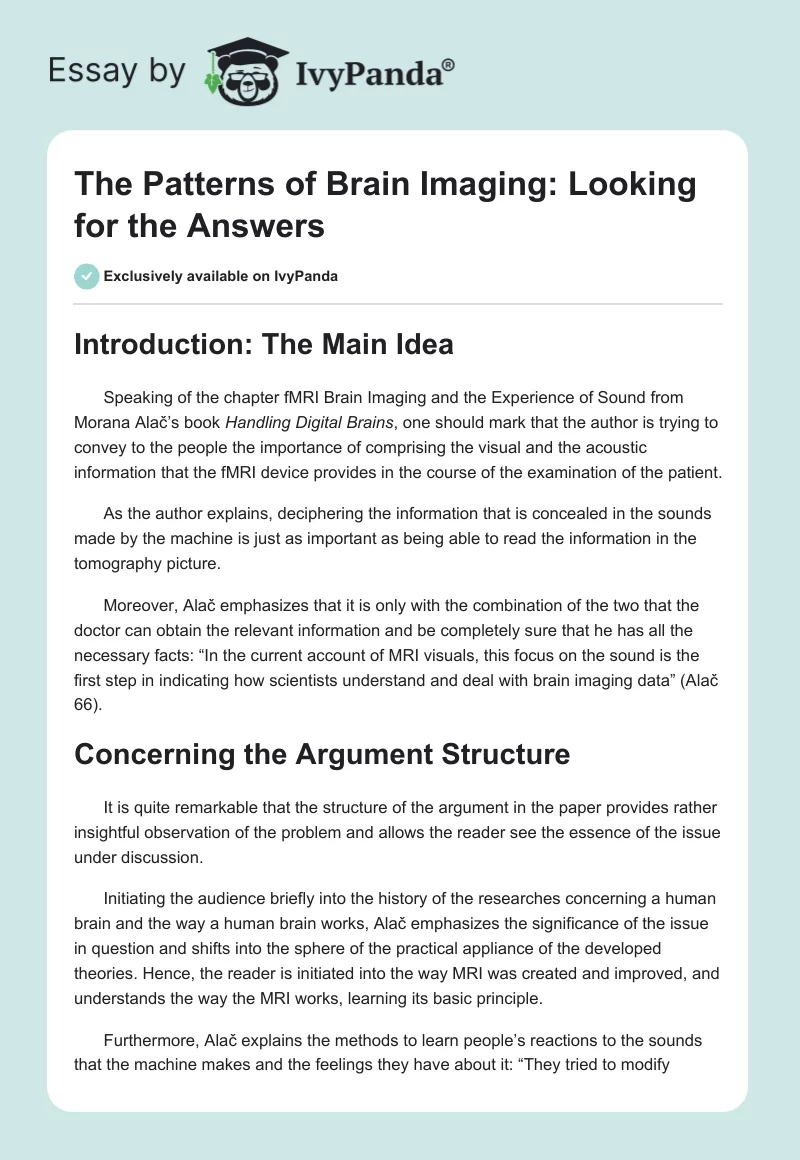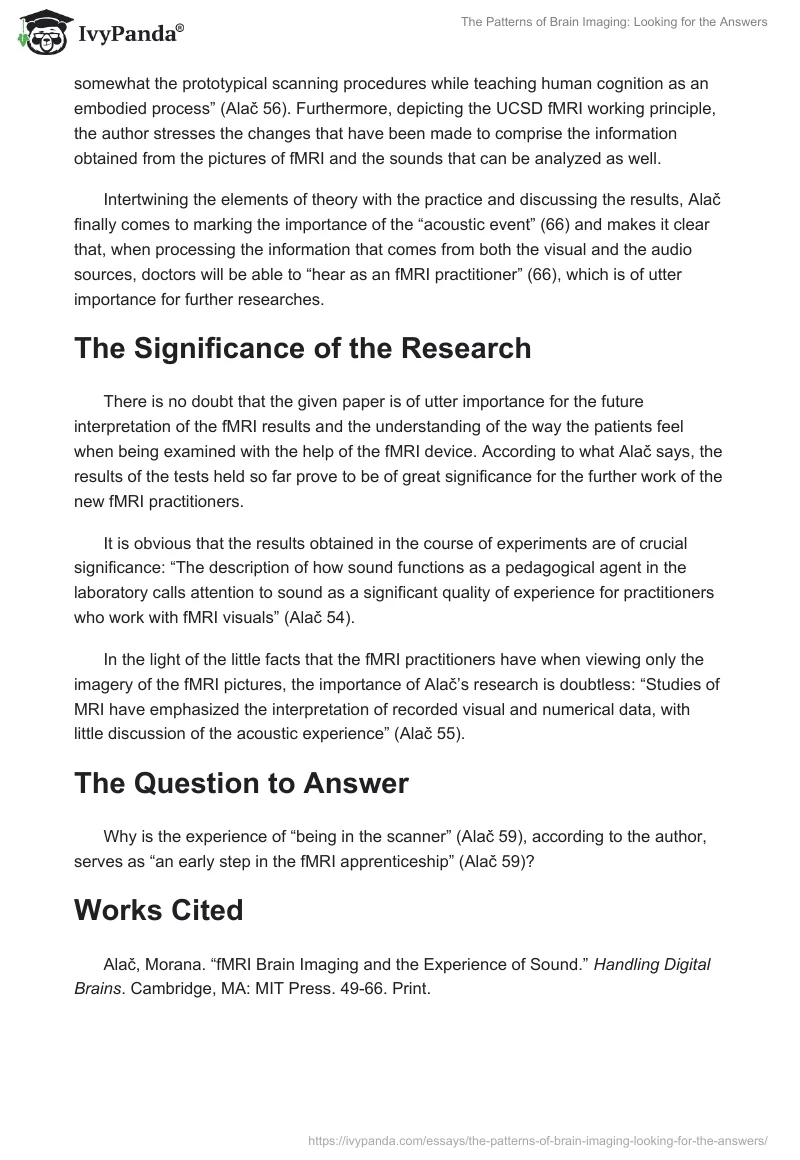Introduction: The Main Idea
Speaking of the chapter fMRI Brain Imaging and the Experience of Sound from Morana Alač’s book Handling Digital Brains, one should mark that the author is trying to convey to the people the importance of comprising the visual and the acoustic information that the fMRI device provides in the course of the examination of the patient.
As the author explains, deciphering the information that is concealed in the sounds made by the machine is just as important as being able to read the information in the tomography picture.
Moreover, Alač emphasizes that it is only with the combination of the two that the doctor can obtain the relevant information and be completely sure that he has all the necessary facts: “In the current account of MRI visuals, this focus on the sound is the first step in indicating how scientists understand and deal with brain imaging data” (Alač 66).
Concerning the Argument Structure
It is quite remarkable that the structure of the argument in the paper provides rather insightful observation of the problem and allows the reader see the essence of the issue under discussion.
Initiating the audience briefly into the history of the researches concerning a human brain and the way a human brain works, Alač emphasizes the significance of the issue in question and shifts into the sphere of the practical appliance of the developed theories. Hence, the reader is initiated into the way MRI was created and improved, and understands the way the MRI works, learning its basic principle.
Furthermore, Alač explains the methods to learn people’s reactions to the sounds that the machine makes and the feelings they have about it: “They tried to modify somewhat the prototypical scanning procedures while teaching human cognition as an embodied process” (Alač 56). Furthermore, depicting the UCSD fMRI working principle, the author stresses the changes that have been made to comprise the information obtained from the pictures of fMRI and the sounds that can be analyzed as well.
Intertwining the elements of theory with the practice and discussing the results, Alač finally comes to marking the importance of the “acoustic event” (66) and makes it clear that, when processing the information that comes from both the visual and the audio sources, doctors will be able to “hear as an fMRI practitioner” (66), which is of utter importance for further researches.
The Significance of the Research
There is no doubt that the given paper is of utter importance for the future interpretation of the fMRI results and the understanding of the way the patients feel when being examined with the help of the fMRI device. According to what Alač says, the results of the tests held so far prove to be of great significance for the further work of the new fMRI practitioners.
It is obvious that the results obtained in the course of experiments are of crucial significance: “The description of how sound functions as a pedagogical agent in the laboratory calls attention to sound as a significant quality of experience for practitioners who work with fMRI visuals” (Alač 54).
In the light of the little facts that the fMRI practitioners have when viewing only the imagery of the fMRI pictures, the importance of Alač’s research is doubtless: “Studies of MRI have emphasized the interpretation of recorded visual and numerical data, with little discussion of the acoustic experience” (Alač 55).
The Question to Answer
Why is the experience of “being in the scanner” (Alač 59), according to the author, serves as “an early step in the fMRI apprenticeship” (Alač 59)?
Works Cited
Alač, Morana. “fMRI Brain Imaging and the Experience of Sound.” Handling Digital Brains. Cambridge, MA: MIT Press. 49-66. Print.


